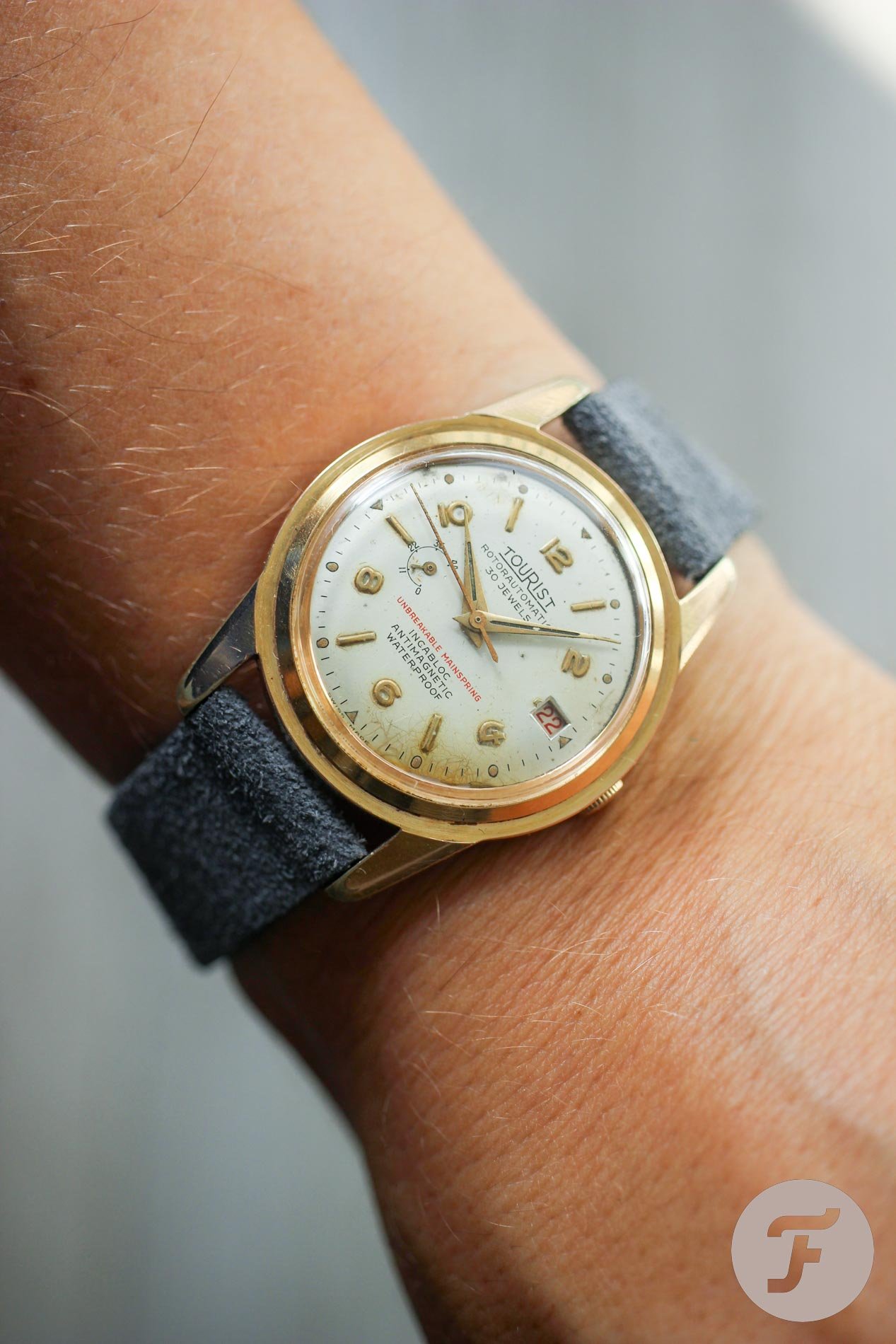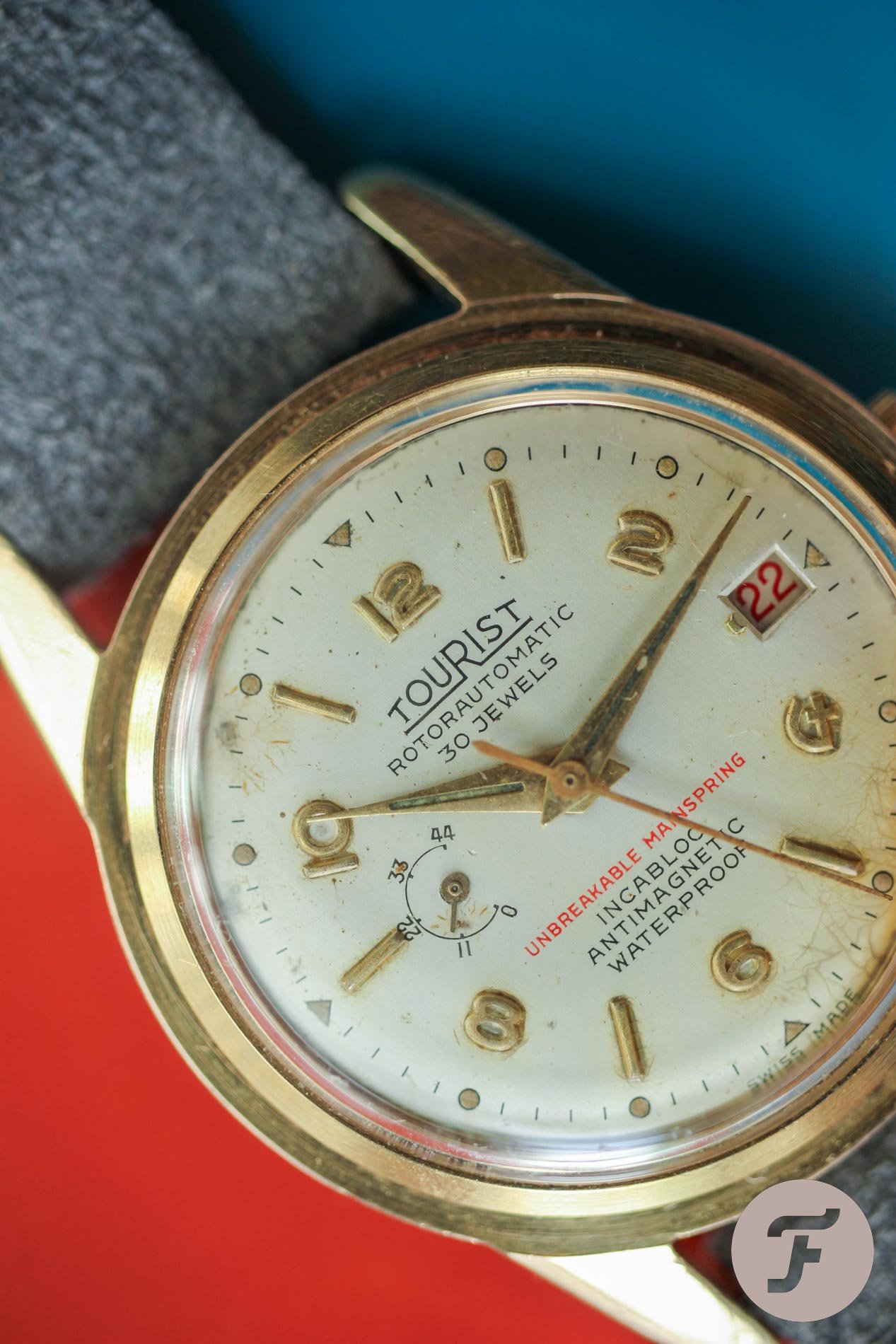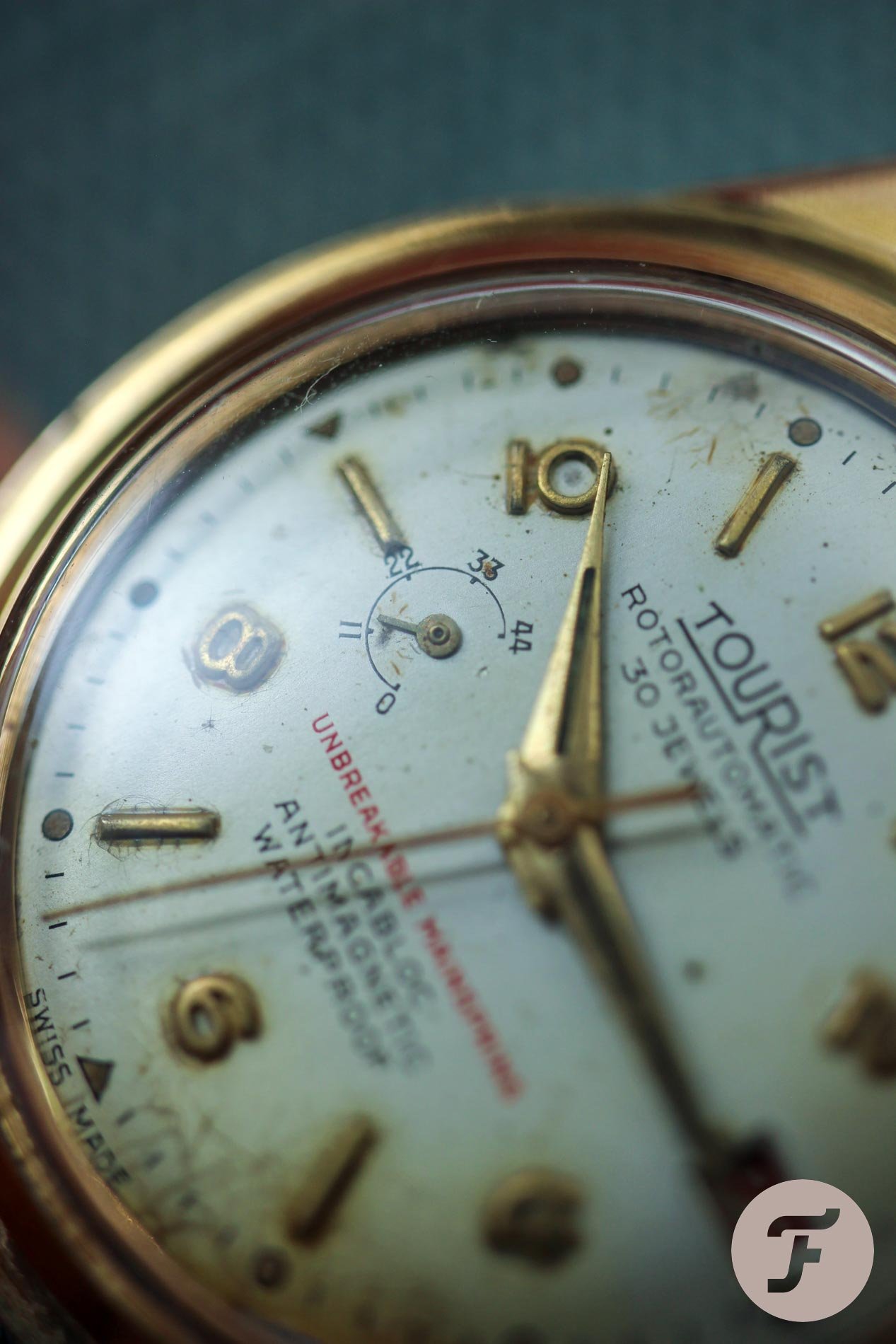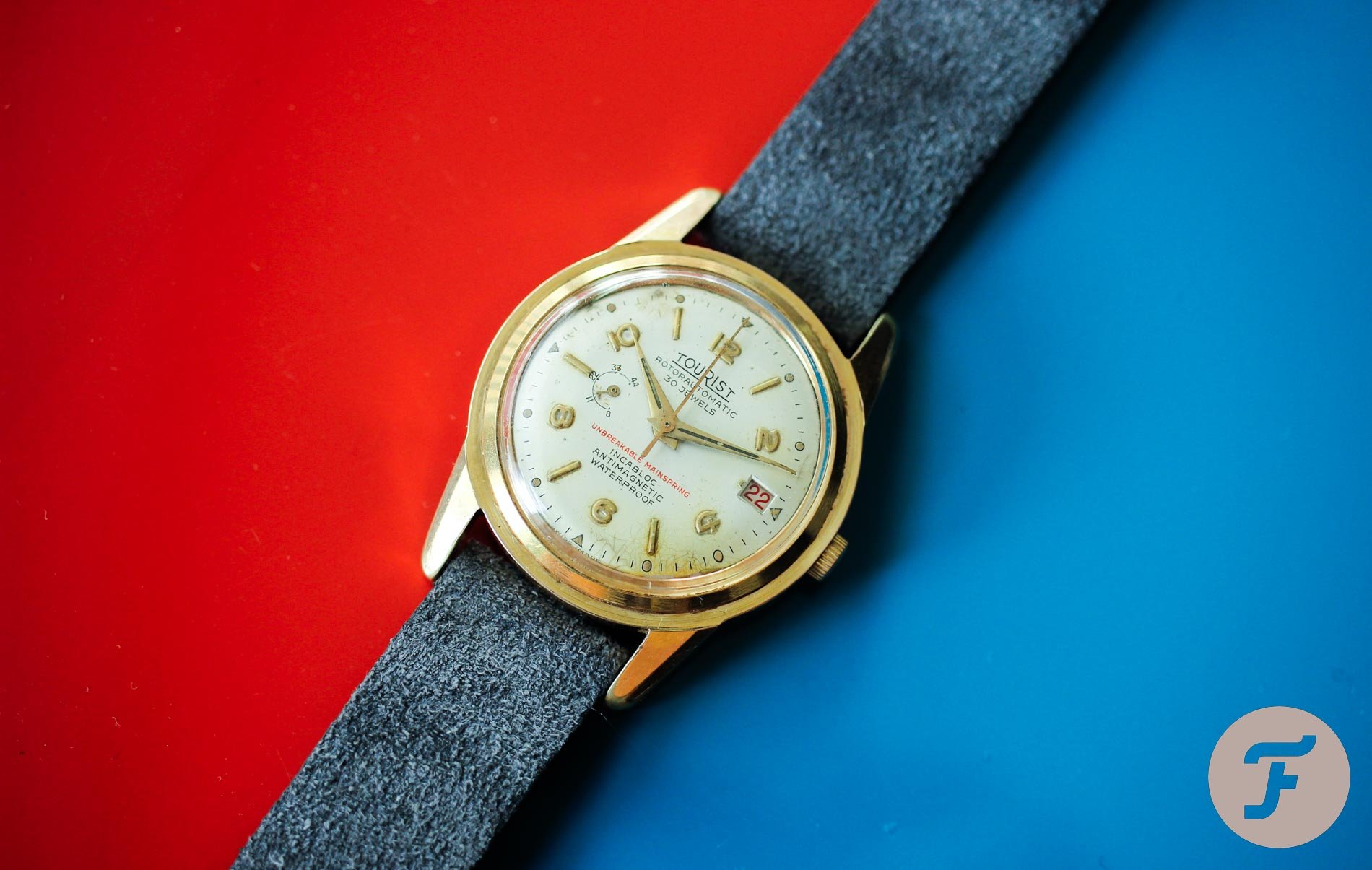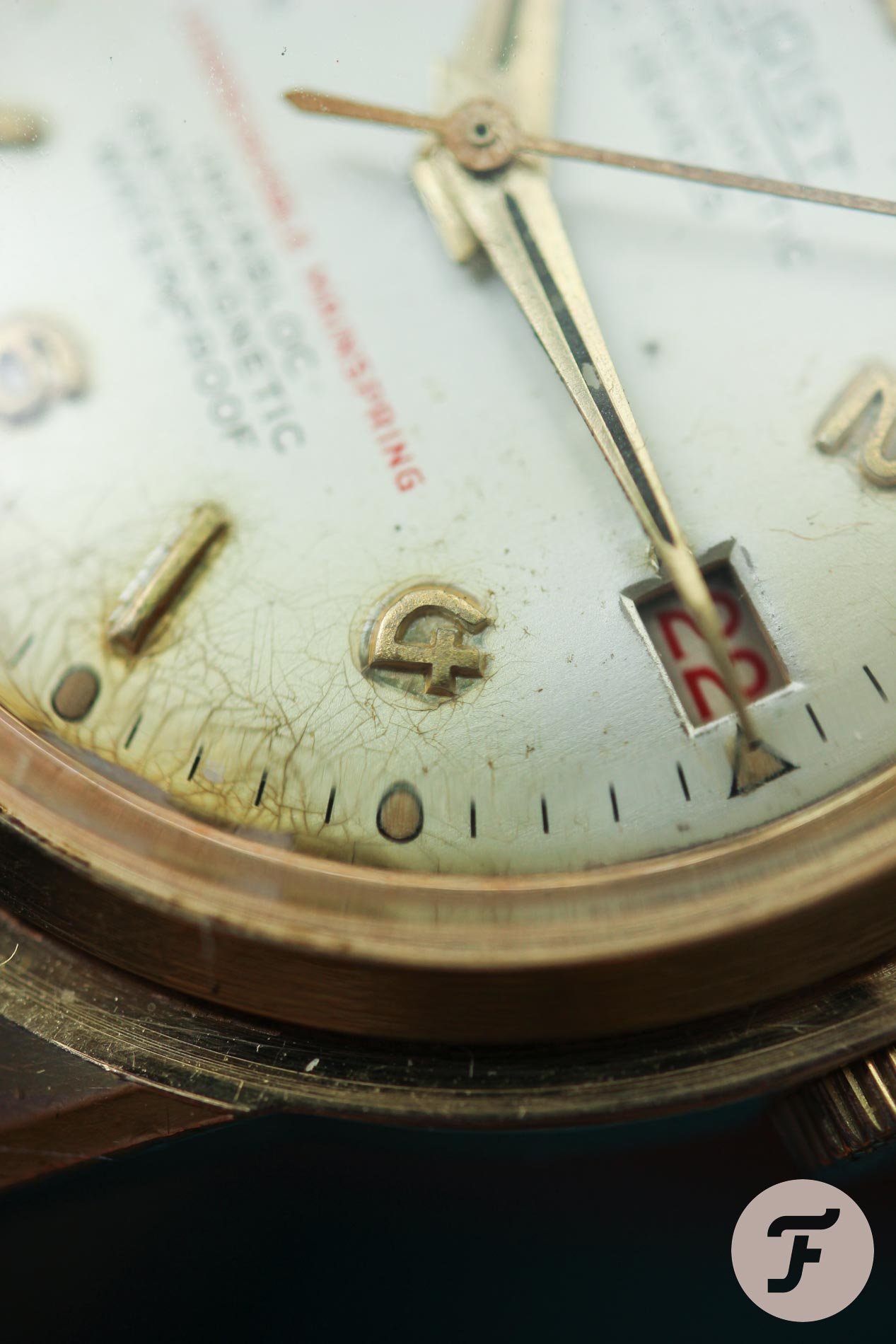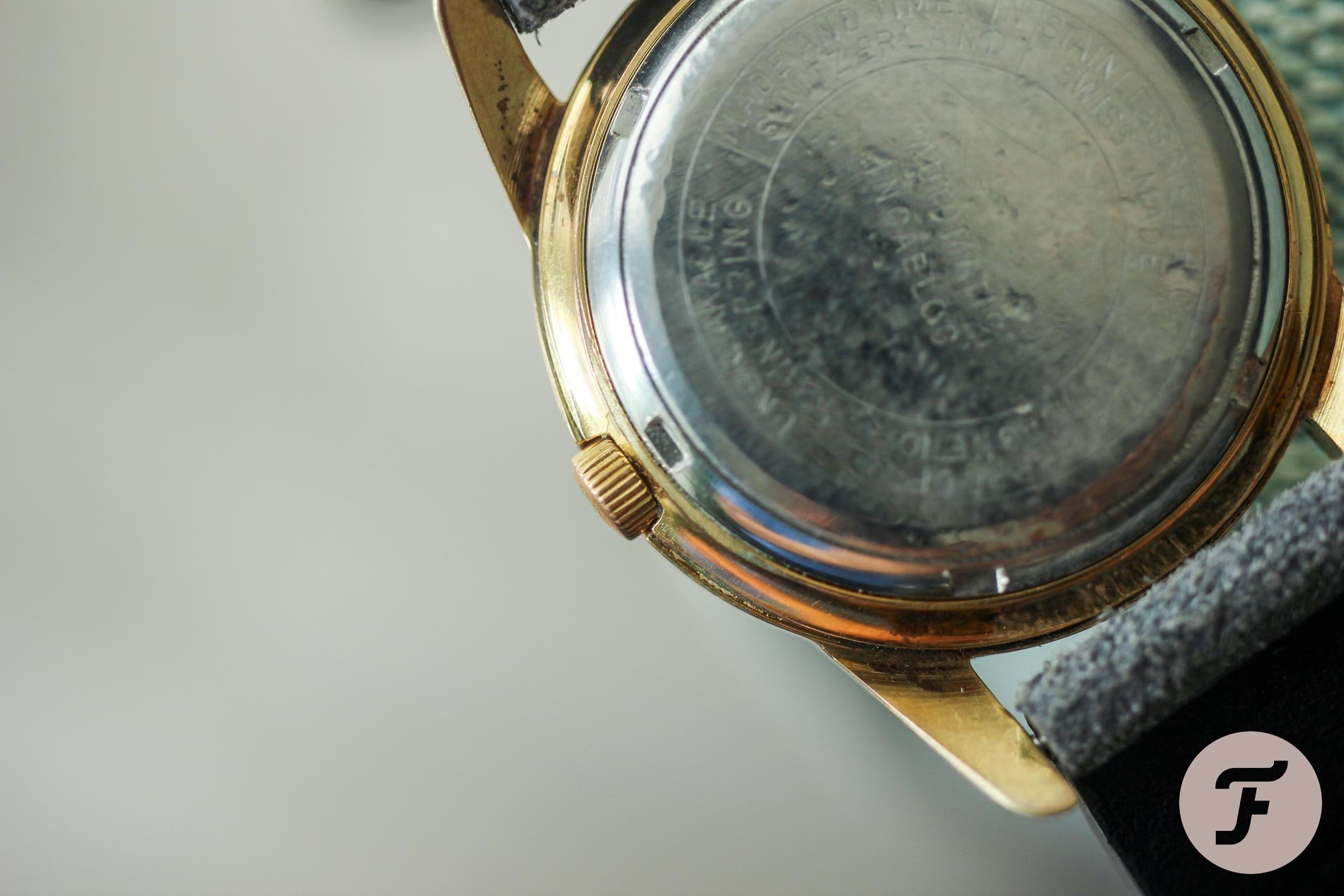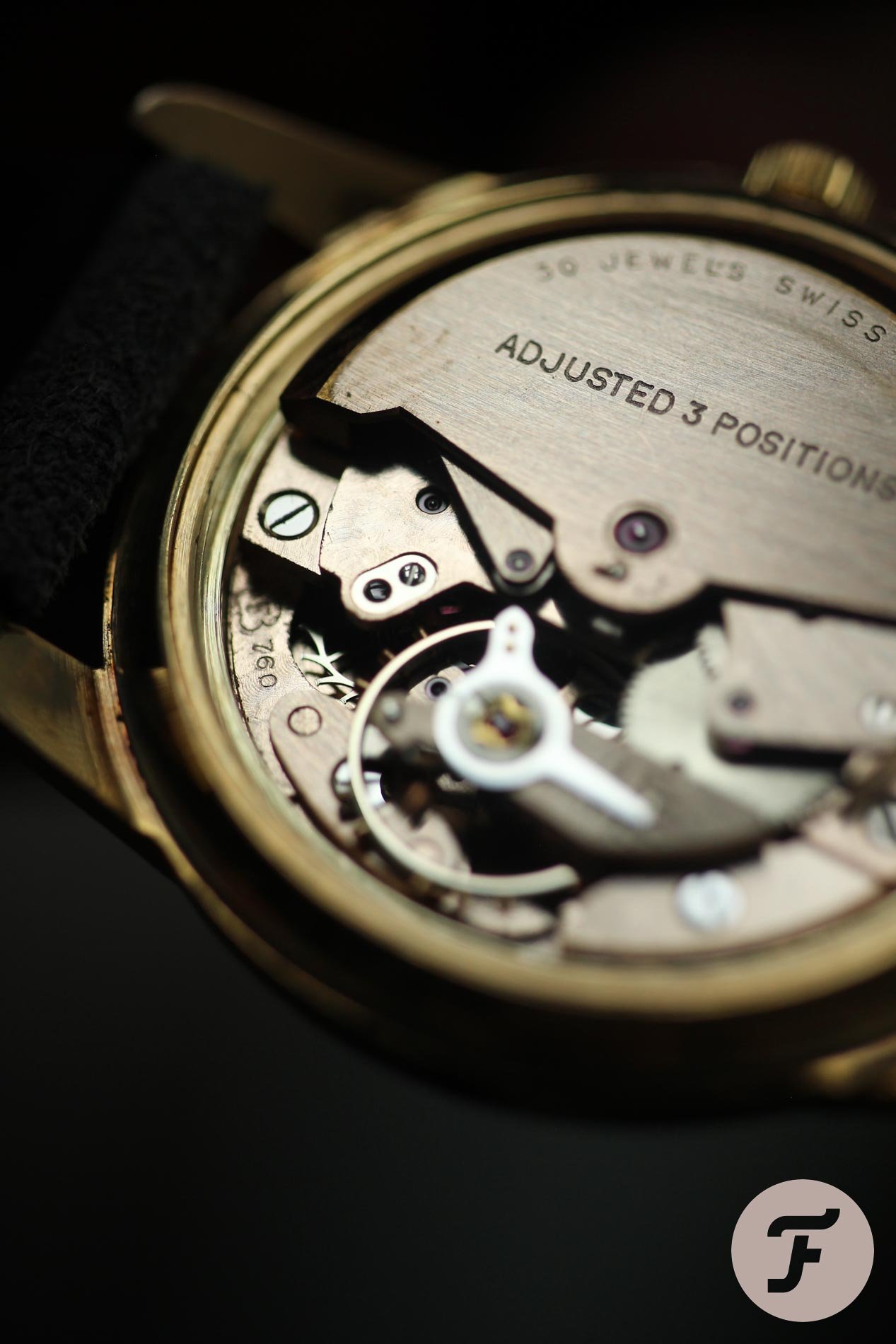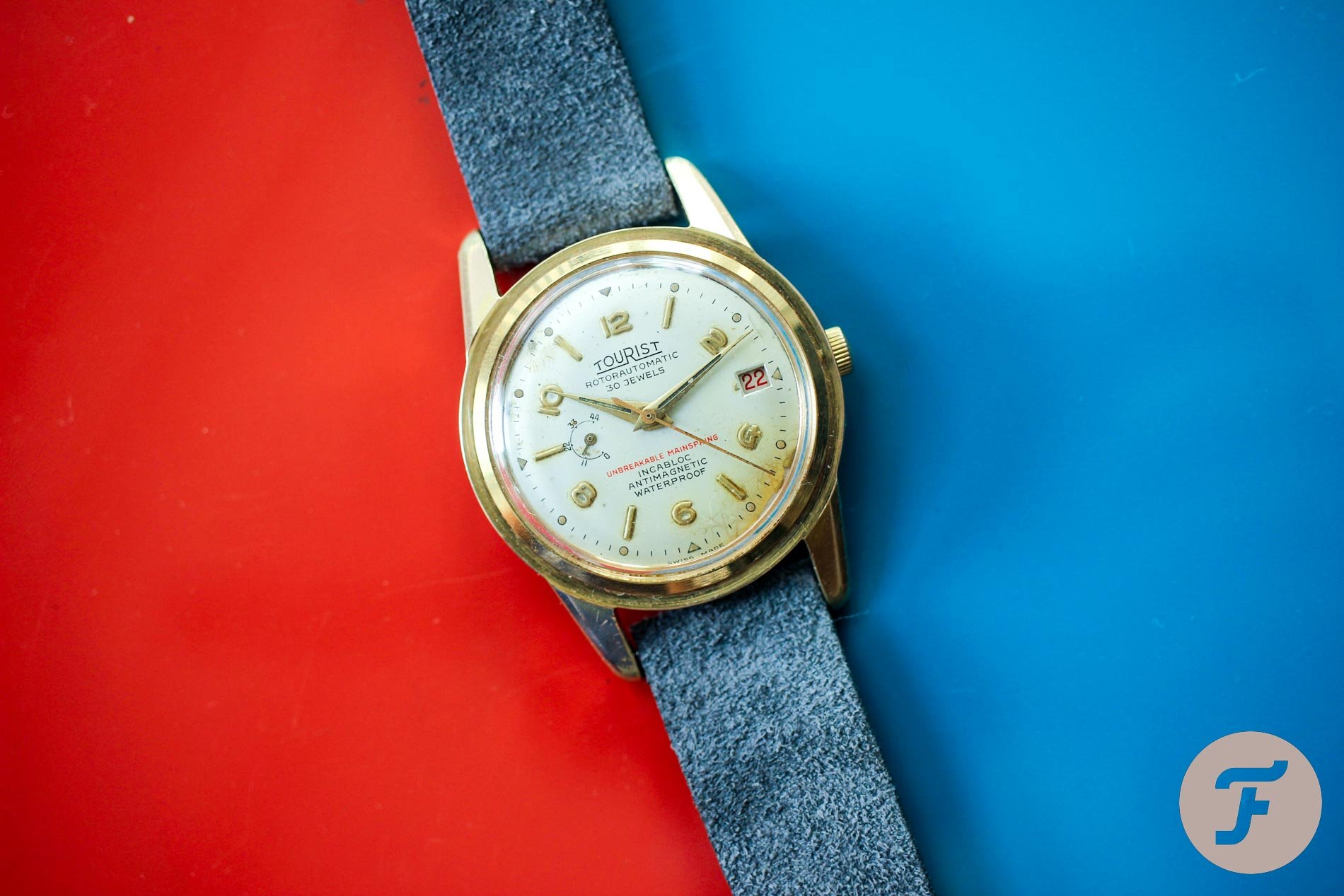#TBT The Pumped-Up Tourist RotorAutomatic With A Felsa F760 Movement
I don’t know if it was the early power reserve indicator, the epic case style, or the Rolex-like novel printed on the dial, but I wanted this Tourist RotorAutomatic the second I spotted it. Oh, and it didn’t help that I’m a sucker for this brand.
The not-too-significant Tourist watch manufacturer holds a special place in my heart. My relationship with Tourist started to form some five or six years ago when I landed the dead-seconds Tourist Radio-Top. The world’s first electrically lit watch, the Tourist Everlight, fascinated me so much that I decided to get together the entire range. After that, my sensors became fully atuned to the slightest Tourist mention.
Tourist RotorAutomatic
I think my watchmaker sent me a link to the Tourist RotorAutomatic auction. It was located in Sweden, which is not a typical location to look for Tourist watches. There wasn’t much of a fight over it, obviously, as there seemingly isn’t much to fight for. I wasn’t in just because of the Tourist logo but also due to the fact that I had never seen this Tourist watch before. And I didn’t still didn’t see any even after I won it and researched it. Let’s take it step by step.
Power reserve dispute
In a recent episode of Fratello Talks, my colleagues nominated a power reserve indicator for an automatic watch as a useless feature. Some comments below that article show there are a few more people like me who actually find it a neat addition. I believe that a power reserve indicator comes in handy if you rotate two or three watches and you want to check how much juice it has left. Besides, I always found it refreshing from a design perspective when integrated nicely. To name a few, check out the modern Louis Erard collaboration with Silberstein or the vintage Seiko 11A Indicator.
An early power reserve indicator
The first watch with this feature came as a prototype in the 1930s. It took about two decades, though, until power reserve indicators made it to serial production. High five to Jaeger-LeCoultre with its Powermatic and later Futurematic. I believe we all agree that the integration of the power reserve indicator on those pieces was much better than how Tourist handled it. There is no documentation available, but considering the watch style and the Felsa F760 movement, I would say we may be looking at a late-’50s creation today.
The design
I like the position of the indicator. It sits to the right of the 9 o’clock index and counterbalances the date sitting far across the dial. What I don’t like that much is how Touriat chose to print the hours around it. The “22” touches the index, and it looks horrible. I get the “11, 22, 33, 44” rhythm, and it is nice, but I would rather choose different scaling to avoid the number squeezing around the index. Clean your glasses or get ready your loupe because it’s not easy to read the scale. But that’s what you get with a case just 34mm in diameter. I don’t mind it at all; I just consider it an eye exercise.
A stepped case
Although it is only 34mm in diameter, the case is not dull at all. The beefy lugs have nice beveled edges. The side of the gold-plated case has a cutout, creating a safe harbor for the crown. Not only is it nicely sunken into the case, but it’s also protected from possible hits. I believe this crown is original. But what deserves the most recognition is the top profile of the case, which many chronographs would be jealous of. The Tourist RotorAutomatic is reminiscent of famous stepped cases.
Back to the dial
The even hours are represented by numerals, while the odd hours are designated with indexes. This way, the dial gets some space to breathe. Both the indexes and the numerals are not printed but applied. They truly look like little sculptures. Many collectors, including me, are fascinated by the hooked “7” on Excelsior Park or Gallet watches, but the “4” the on Tourist RotorAutomatic is equally interesting.
“Poor man’s Rolex”
All the printing on the dial makes me smile. The radium dots and triangles sitting in the minute track push the hour numerals and indexes surprisingly deep toward the center of the dial. As a result, the central portion feels a bit tight. Despite that (and to everyone’s surprise, I guess), Tourist managed to print an entire story there.
I don’t know what vocabulary we should use, but it looks like the entire marketing team wanted to squeeze all the buzzwords from the era onto the dial. “RotorAutomatic” is already a pretty long name, but there is also the “30 Jewels” line under it. Four lines above 6 o’clock read “Unbreakable mainspring” printed in red, followed by “Incabloc”, “Antimagnetic”, and “Waterproof” inscriptions. My advice? Don’t believe it!
Last thoughts
The Tourist RotorAutomatic won’t get you any praise at your next watch get-together. But once again, it shows there is so much you can get for a €100–200 budget. This includes a stepped case and an amusing complication, not to mention the scarcity! There are tons of Omega Constellation watches, but I challenge you to find me another Tourist RotorAutomatic. Happy hunting!

